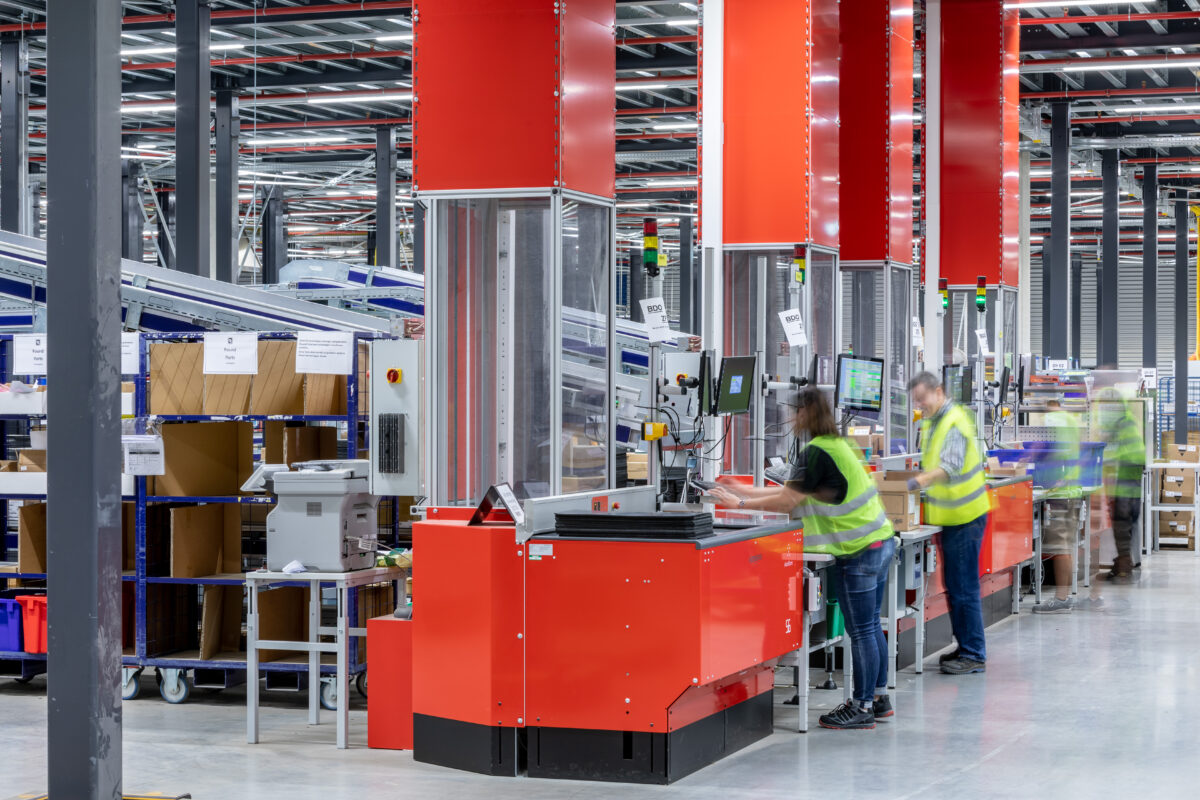Warehouse management is the optimizing and controlling of operations in a warehouse from beginning to end. Warehouse management encompasses anything from organizing the space to fulfilling orders. There are many ways to go about warehouse management, from manual work to a warehouse management system.
Warehouse Management vs Inventory Management
Oftentimes, people confuse inventory management and warehouse management. Although they have some similarities, they both have fundamental differences as well.
Inventory management
This refers to how much stock you have in the entire business. It helps make forecasts and know which products are selling most/least company-wide.
Warehouse Management
Warehouse management refers to handling inventory as well as other associated tasks within a warehouse or Distribution Center.
What are the Benefits of Warehouse Management?
Warehouse management allows for all processes to run smoothly and efficiently. Warehouse management is something that end customers rarely think about, but businesses know all too well.
With the rise of digital technology, warehouse management has seen an evolution in the way that a warehouse runs effectively. Investing in Warehouse Management Systems and tools allows you to run a faster and more cost-effective warehouse.
What Is the Core of Warehouse Management?
Understanding the principles of warehouse management can help your warehouse understand where processes can be improved. Here are the 5 principles of warehouse management to guide your warehouse.
1. Know Your Customer
Exceeding your customers’ expectations and providing a positive customer experience is a top priority for successful companies. However, this requires getting to know what your customers want and identifying what needs to be improved to make this happen. Understanding your customers’ current frustrations with your customer experience is a great place to start. For instance, are people unhappy with the shipping times they’re receiving? Are they being promised a timeline that is not being met? Is the returns process unorganized or slow? Collecting this customer data is important to understanding which aspects of your warehouse management need to be improved. There are multiple ways to collect this information, including customer satisfaction surveys, customer reviews, or even complaints to the sales team or other customer facing teams. With the largest customer pain points identified, you will know your customers better and understand how to make them happier.
2. Optimize Your Warehouse
With large-scale inventory storage, numerous warehouse workers, and several types of workflows, it’s easy for warehouses to become unorganized and potentially chaotic. While this is a common and understandable situation, it’s not the most productive or efficient way to run a warehouse. Messy warehouses can also lead to mistakes that are damaging financially and for the customer experience.
Optimizing your warehouse is an important way to reduce these errors, promote productivity, and provide a better customer experience. With an optimized floor plan and workstations, along with automated warehouse equipment, it’s significantly easier to manage a warehouse efficiently. For instance, optimized floorplans help to save floor space and ensure safety, organized workstations can reduce mistakes, and automated warehouse equipment improves efficiency and shortens turnaround times.
3. Be flexible and adapt
As with most industries, digital transformation is increasing customer expectations and changing the way business is done. And, warehouse management is no exception. It’s critical for warehouses to keep up with industry trends and adapt where possible. This ensures that your company is able to stay competitive and that your customers are enticed to stay around longer.
Currently, the most important trends to pay attention to in warehouse management include data-driven decision making and automation. We’ll cover both of those topics in more detail to help you understand how to adapt your warehouse management.
4. Follow your data
Collecting data is the first step in making data-driven decisions possible. And, warehouse management software helps companies collect that data. With visibility into warehouse workflows including inventory, returns, exchanges, and order fulfillment, companies can see what’s performing well and what’s not. Using this data, it’s simple to optimize warehouse operations and fix processes that need to be improved. Not to mention, warehouse software ensures that your data is centralized, accessible, and accurate.
5. Use technology
Warehouse management technology has improved significantly over the years. There are several solutions that automate various aspects of warehouse operations, including:
- Receiving
- Sortation
- Picking and Packing
- Shipping
- Fulfillment
- Goods to Person
With the help of these modern solutions, warehouses can automate time-consuming and error-prone tasks. For example, sortation systems can automate the receiving process, handling returns and exchanges, putaway, and enabling cross docking. Sortation systems can also automate picking and packing, as well as shipping workflows with optimized zone skipping. In addition, the Autostore Automated Storage and Retrieval System (ASRS) is an innovative technology that uses robots to automate the storage and retrieval of inventory in a warehouse. With lots of options to choose from, consider tapping into the expertise of a consultant to help you select the right combination of solutions for your warehouse.
What are common Warehousing Challenges?
Some of the most common challenges in a warehouse / Distribution Center are:
- Ineffective picking process: When picking and packing are done manually, workers have to walk long distances throughout warehouses, manually pick items, bring them to the correct station, and pack them into orders for shipping. This is a labor-intensive process that can lead to mistakes that are both expensive for your company and negative for the customer experience.
- Inaccurate inventory: Tracking and managing inventory across receiving, sorting, picking and packing, storage, and shipping workflows can be difficult. And, the cost of inaccurately managing inventory is high.
- Labor costs: With numerous workers conducting manual and repetitive tasks, paying for labor can quickly become costly.
- Inefficient space utilization: Organizing large amounts of inventory can be difficult and inefficient, especially with manual sortation or picking and packing stations.
- Data usability (or lack thereof): Keeping track of inventory, returns, exchanges, picking and packing, and shipping is inherently complex. And, this valuable information is easy to lose without a viable software solution.
- Quality control: Similarly, maintaining accurate warehouse operations can be challenging in busy warehouses. Without a central and organized method for tracking quality, damaging mistakes can go undetected.
- Peak season: Seasonal fluctuations can rapidly change the pace of warehouse operations, and adapting to these changes can be difficult without the right tools and processes in place.
Warehouse management solutions are designed to help you overcome these challenges. For instance, there are numerous sortation solutions and goods to person solutions that automate warehouse operations so you can improve inventory accuracy, cut labor costs, optimize warehouse floor space, increase data usability, enhance quality control, and adapt to seasonal fluctuations.
What should you look for when choosing the right Warehouse Management System?
A warehouse management system is software that can help manage and optimize warehouse operations. Choosing a warehouse management system that is right for you may seem daunting at first, but identifying bottlenecks in your warehouse management will help you identify what is most important for your warehouse.
For instance, some bottlenecks are more common in certain industries than others. Understanding the challenges of your industry will help you identify what types of bottlenecks you’re facing and the best solutions to overcome them. Here are a few of the top industries that benefit from warehouse management solutions:
In addition to reviewing your industry challenges, it can be helpful to ask yourself the following questions about your warehouse operations:
- What are your requirements?
- Are the costs clear?
- Is it an out of the box solution?
- How much are the add-ons YOU will need?
- What’s your relationship with the provider?
- Can you access them easily if needed?
- Are they in the same time zone?
- Is support provided in the same language?
- How well does it communicate with any automation (WES) you may have?
- Keep your busy seasons in mind
By answering these questions, you can better understand what type of solution best suits your needs.
Investing in a Warehouse Management System
SDI Element Logic has years of experience helping warehouses like yours become more efficient and profitable. We offer several warehouse solutions that automate receiving, routing, sortation, picking and packing, shipping, and fulfillment.
Contact us to learn how we can help you embrace automation and start improving your warehouse operations today.


